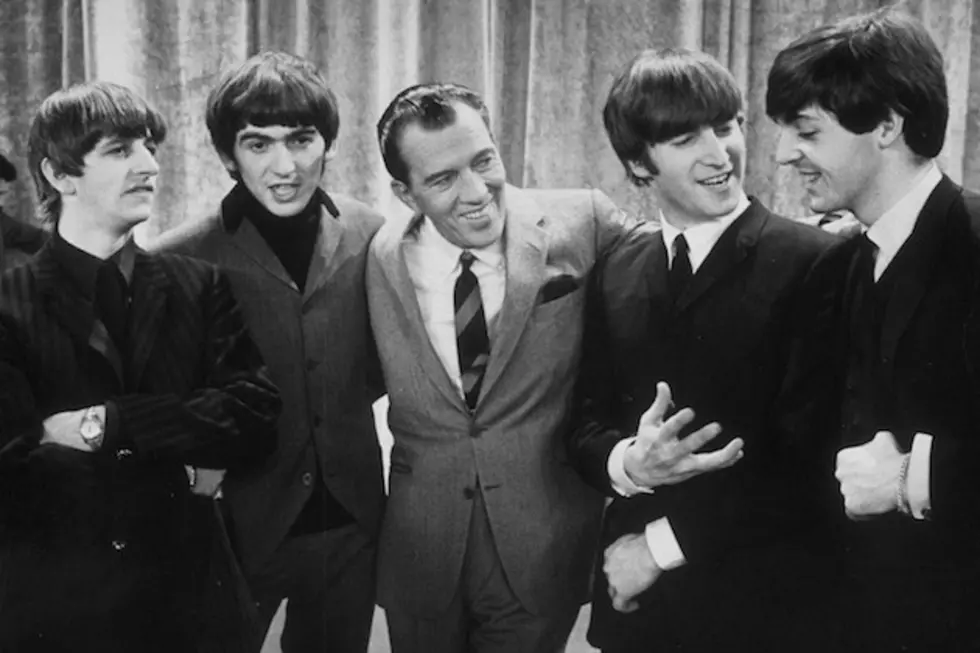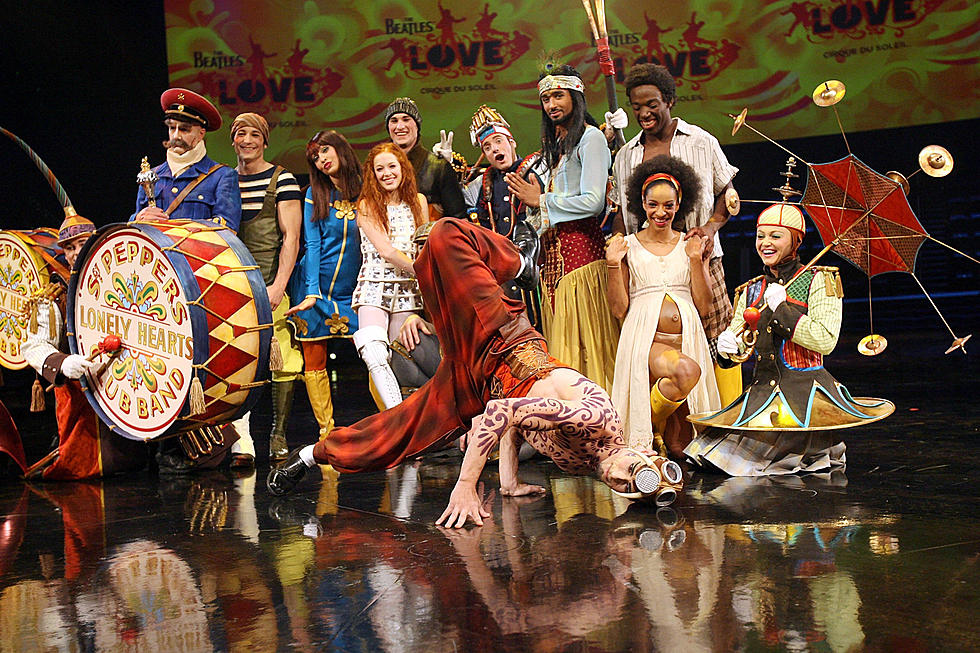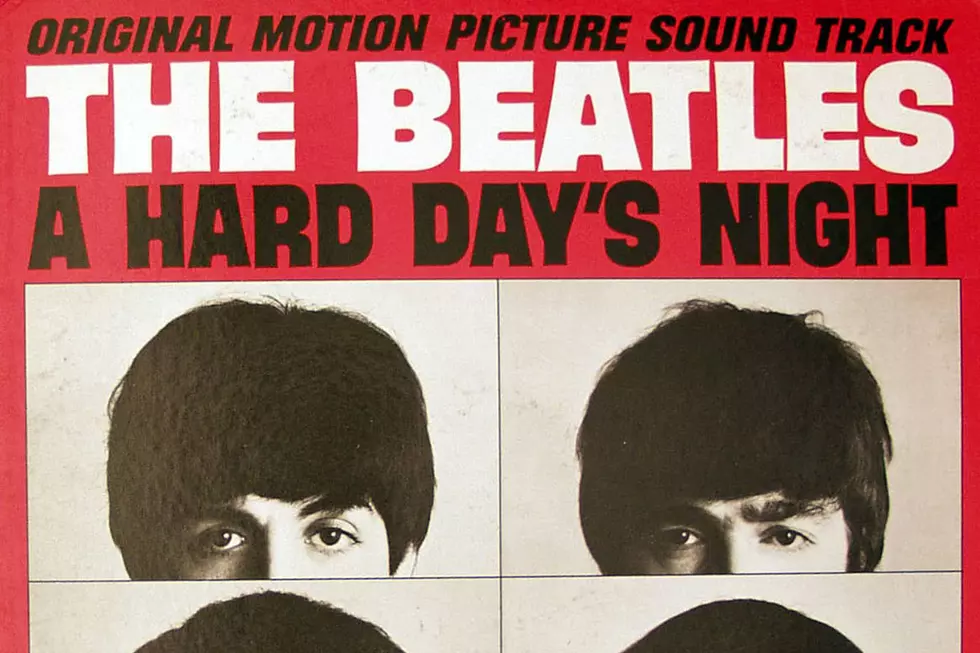
The Beatles’ Difficult Journey to Success in America
Legend tells us that on February 9, 1964, the Beatles stormed to superstardom in America before a record-smashing 73 million people during a live performance on 'The Ed Sullivan Show.' But that success was anything but preordained. In fact, the Fab Four themselves wondered if they'd ever break in the U.S.
CBS variety show host Ed Sullivan had first run into the burgeoning Beatles fanbase on Halloween night in 1963, when he happened into London's airport and found thousands of screaming fans waiting for the band's flight back from a tour of Sweden.
"Of course, he'd never heard of the Beatles," Jerry Bowles, who wrote 'A Thousand Sundays: The Story of the Ed Sullivan Show,' told NPR. "But instantly he recognized that if they could get 3,000 screaming teenagers to show up at an airport in the middle of the night, they must be somebody."
Despite their fame at home, Sullivan had happened upon the Beatles at the conclusion of a very long year for the group in the American marketplace, filled with many crushing disappointments. At this point, the group couldn't even get Capitol Records -- the American counterpart to their UK label, EMI -- to issue their new music. Both 'Please Please Me' and 'She Loves You' would be relegated to tiny U.S. imprints, the first of which even had the band's name wrong: B-E-A-T-T-L-E-S.
"We felt very insecure," Ringo Starr told CBS, "because the previous summer, George Harrison came to America. We were on Vee-Jay and Swan Records then, and we couldn't sell a record. He was going into record shops, and asking: 'Have you got any Beatles records?' And they were saying no. When he came back, he said: 'Oh, it's going to be tough. They don't know us over there.'"
A handshake deal between Sullivan and Beatles manager Brian Epstein meant that the group would perform three times on American television -- receiving top billing, and $10,000. But not until 1964.
In the meantime, they'd have to catch a break in America, and that looked anything but certain.
Five days after Sullivan came face to face with Beatlemania in London for the first time, the Beatles participated in a Royal Command performance at the Prince of Wales Theatre, prompting a series of early news stories -- and even a morning segment on CBS in which the reporter breathlessly advised: "Those are the Beatles and this is Beatleland, formerly known as Britain -- where an epidemic known as Beatlemania has seized the teenage population, especially female."
Unfortunately, that was early on November 22, 1963. Later the same day, of course, President John F. Kennedy was assassinated in Dallas -- plunging America into mourning, and causing CBS evening anchor Walter Cronkite to sit on the Beatles story.
That's the way it was for the Beatles in '63.
Chicago DJ Dick Biondi had been one of the first in the U.S. to air one of the quartet's songs, giving their misspelled Vee-Jay label copy of 'Please Please Me' a spin -- to little response. Biondi also played it again, a few months later, in Los Angeles after getting fired back in the Windy City. The reaction in California, Biondi told NPR, was even worse: "The phones started ringing, and the kids said, 'Take that crap off and play the Beach Boys!'"
The follow up, 'From Me to You,' was a stateside hit -- but only when it was recorded by Del Shannon, the American who'd earlier hit with 'Runaway.' Capitol, steadfastly ignoring the Beatles' Top 10 UK success, refused to distribute 'She Loves You,' leaving it for the tiny Swan imprint. Dick Clark memorably featured the song as part of his Rate A Record segment on 'American Bandstand,' broadcast out of Philadelphia, where Swan was also based. 'She Loves You' flopped.
That was in the fall of 1963. Finally, in December, Cronkite aired the Beatles' Royal Command story in prime time. The tide began to turn. DJ Carroll James, broadcasting out of Washington D.C. on WWDC, had a copy of the British version of 'I Want to Hold Your Hand' shipped in and put it on the air just before Christmas. Soon, the track had caught on with audiences in St. Louis and Chicago. Capitol Records ended up rushing the single out on December 26, 1963 -- and, powered along by out-of-school kids with Christmas money, 'I Want To Hold Your Hand' became the Beatles' first stateside No. 1 song.
"It wasn’t just 'The Ed Sullivan Show'; it was the time," said Ken Ehrlich, who produced 'The Beatles: The Night That Changed America.' "The Kennedy assassination was three months before the Beatles were on 'Ed Sullivan.' I honestly believe that that had something to do with it. As a country, we were in such a state of depression and melancholy and sadness, then all of a sudden, along came these four guys -- and they said, you know, it’s OK."
As the 'Ed Sullivan Show' debut approached, interest went from a slow boil to an eruption. Studio 50, where the Sullivan show originated -- and where David Letterman now broadcassts a late-night program -- would only fit 700 people. More than 50,000 requests poured into CBS. That included scores of celebrities, many of whom wanted spots for their daughters -- including conductor Leonard Bernstein (who didn't get seats), talk show host Jack Parr and former Vice President Richard Nixon (who did). Even Sullivan got in on the frenzy. Speaking on his own program, a week before the Beatles played, Sullivan asked his audience: "Coincidentally, if anyone has a ticket for the Beatles on our show next Sunday, could I please borrow it? We need it very badly."
In a final sign of just how far the Beatles have come, Sullivan opened that now-legendary February 9 episode by reading a congratulatory telegram from Elvis Presley, an early hero to the band, and Presley manager Tom Parker -- nicknamed "Colonel." Harrison, speaking as part of the Anthology films, said they knew America had finally been conquered: "We were aware that Ed Sullivan was the big one because we got a telegram from Elvis and the Colonel. And I've heard that while the show was on there were no reported crimes, or very few. When the Beatles were on 'Ed Sullivan,' even the criminals had a rest for ten minutes."
After a commerical break, with spots devoted to forgotten brands like Aero Shave and Griffin Shoe Polish, Sullivan gave the Beatles an introduction that perfectly framed the pandomonium rising around them in the U.S.: "Now yesterday and today, our theater's been jammed with newspapermen and hundreds of photographers from all over the nation, and these veterans agreed with me that this city never has witnessed the excitement stirred by these youngsters from Liverpool who call themselves the Beatles. Now tonight, you're gonna twice be entertained by them. Right now, and again in the second half of our show. Ladies and gentlemen, the Beatles! Let's bring them on."
The set opened with 'All My Loving' and then ''Till There Was You,' before the Beatles were individually introduced. The caption below John Lennon for this segment read: "Sorry, girls. He's married." The Beatles concluded their first set with 'She Loves You' before the show moved on -- or tried to move on -- to its other acts. Magician Fred Kaps had the unlucky role of following the Beatles. Sullivan's lineup that night also included impressionist Frank Gorshin (who became better known later as the Riddler in the 'Batman' television series), acrobats Wells and the Four Fays, the McCall and Brill comedy team and Broadway star Georgia Brown, who performed with cast members from 'Oliver.' Predictably, the audience of teen Beatlemaniacs continued shrieking for their beloved mop tops, prompting a gentle admonishment from Sullivan himself: "If you don't keep quiet, I'm going to send for a barber." The Beatles then returned to perform 'I Saw Her Standing There' and their belated American breakthrough 'I Want to Hold Your Hand.'
Paul McCartney, also speaking as part of the Anthology series, said the group was well aware of the significance of the moment -- and the role their look played in it: "It was very important. We came out of nowhere with funny hair, looking like marionettes or something. That was very influential. I think that was really one of the big things that broke us -- the hairdo more than the music, originally."
Still, not every one was buying in. Ray Block, who served as Sullivan's musical director, told a reporter for The New York Times: "The only thing that’s different is the hair, as far as I can see. I give them a year." Newsweek, in a February 24, 1963 edition, chirped: "Visually, they are a nightmare: tight, dandified, Edwardian/Beatnik suits and great pudding bowls of hair. Musically, they are a near-disaster: guitars and drums slamming out a merciless beat that does away with secondary rhythms, harmony, and melody. Their lyrics (punctuated by nutty shouts of 'yeah, yeah, yeah!') are a catastrophe, a preposterous farrago of Valentine-card romantic sentiments." The piece ended with another dire -- and utterly incorrect -- prediction about the Beatles' fate: "The odds are they will fade away, as most adults confidently predict."
The Sullivan show that night had reached more than 45 percent of households with televisions, an astounding number today. And the Beatles, despite what "most adults confidently predicted" back then, had finally gained a foothold in America -- one they'd never relinquish.
Styx and Foreigner Trade Awesome Beatles Stories
More From Ultimate Classic Rock









